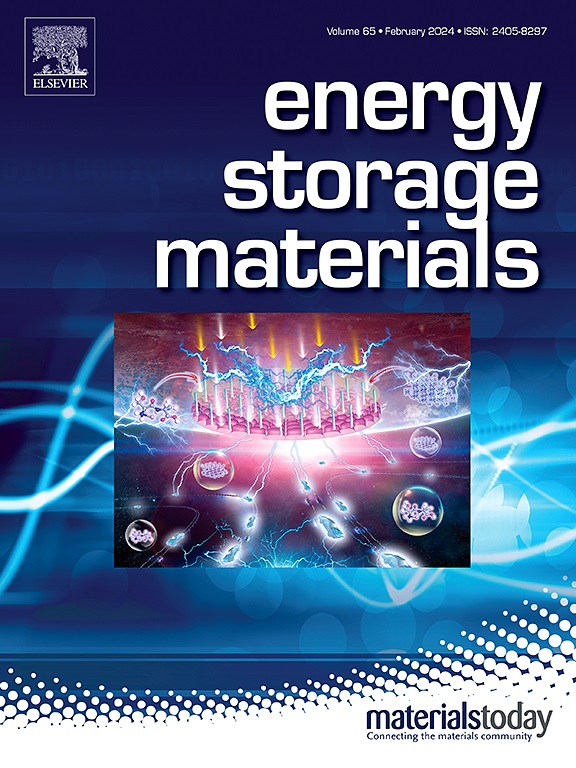Polymer dielectrics intercalated with a non-contiguous granular nanolayer for high-temperature pulsed energy storage
IF 18.9
1区 材料科学
Q1 CHEMISTRY, PHYSICAL
引用次数: 0
Abstract
Polymer dielectrics suffer from significant degradation in energy density and charge–discharge efficiency at high temperatures, and incorporating inorganic nanofillers into polymer is the most straightforward and effective approach to ameliorate this behavior. However, the nanofillers are prone to form aggregated state driven by surface energy and electrostatic forces, compromising high-temperature energy storage performance of dielectrics. Here, we propose a unique non-contiguous granular intercalation strategy to solve the nanofiller aggregation problem. Specifically, an intercalation consisting of non-contiguous distributed aluminum@alumina (Al@AlOx) core–shell nanoparticles is introduced into polyetherimide (PEI) matrix via sputtering reaction. It should be noted that the non-contiguous distribution of nanoparticles within the intercalation ensures discontinuous charge transport, which prevents the formation of conductive network within the nanocomposite. Additionally, benefiting from charge trap induced by wide-bandgap AlOx shell and Coulomb blockade effect of Al core, the charge transport is significantly suppressed. The nanocomposite achieves ultrahigh energy densities of 9.0 J cm⁻3 at 150 °C and 6.2 J cm⁻3 at 200 °C, with charge–discharge efficiencies ≥ 90 %. This work offers a promising pathway for the design of high-temperature energy storage dielectrics and holds huge potential for scalable fabrication.

求助全文
约1分钟内获得全文
求助全文
来源期刊

Energy Storage Materials
Materials Science-General Materials Science
CiteScore
33.00
自引率
5.90%
发文量
652
审稿时长
27 days
期刊介绍:
Energy Storage Materials is a global interdisciplinary journal dedicated to sharing scientific and technological advancements in materials and devices for advanced energy storage and related energy conversion, such as in metal-O2 batteries. The journal features comprehensive research articles, including full papers and short communications, as well as authoritative feature articles and reviews by leading experts in the field.
Energy Storage Materials covers a wide range of topics, including the synthesis, fabrication, structure, properties, performance, and technological applications of energy storage materials. Additionally, the journal explores strategies, policies, and developments in the field of energy storage materials and devices for sustainable energy.
Published papers are selected based on their scientific and technological significance, their ability to provide valuable new knowledge, and their relevance to the international research community.
 求助内容:
求助内容: 应助结果提醒方式:
应助结果提醒方式:


